Related Research Articles
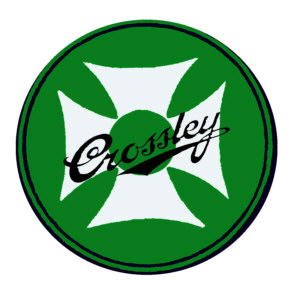
Crossley Motors was an English motor vehicle manufacturer based in Manchester, England. It produced approximately 19,000 cars from 1904 until 1938, 5,500 buses from 1926 until 1958, and 21,000 goods and military vehicles from 1914 to 1945.
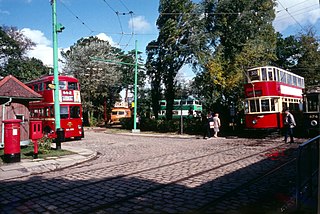
The East Anglia Transport Museum is an open-air transport museum, with numerous historic public transport vehicles. It is located in Carlton Colville a suburb of Lowestoft, Suffolk. It is the only museum in the country where visitors can ride on buses, trams and trolleybuses, as well as a narrow-gauge railway.
British United Traction (BUT) was a manufacturer of railway equipment and trolleybuses. It was established in 1946 as a joint venture between AEC and Leyland.

Guy Motors was a Wolverhampton-based vehicle manufacturer that produced cars, lorries, buses and trolleybuses. The company was founded by Sydney S. Guy (1885–1971) who was born in Kings Heath, Birmingham. Guy Motors operated out of its Fallings Park factory from 1914 to 1982, playing an important role in the development of the British motor industry.

The AEC Q-type is an AEC-built, side-mounted-engine, single- and double-decker bus that was launched in 1932.

Charles H Roe was a Yorkshire coachbuilding company. It was for most of its life based at Crossgates Carriage Works, in Leeds.
The Mexborough and Swinton Traction Company was the name adopted by the Mexborough & Swinton Tramways Company in 1929 following the introduction of trolleybuses on all its routes. It operated in the West Riding of Yorkshire, England, over routes serving Manvers Main Colliery, Wath upon Dearne and the towns of Rotherham, Rawmarsh, Swinton, Mexborough, Conisbrough and the estate at Conanby.
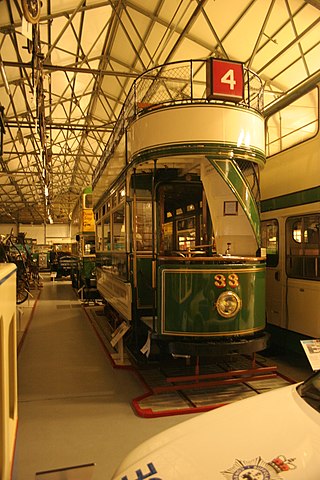
The Ipswich Transport Museum is a museum in Ipswich, Suffolk, England, devoted principally to the history of transport and engineering objects made or used in its local area.

The Adelaide trolleybus system formed part of the public transport network in Adelaide, South Australia from 1932 until 1963.

The Rotherham trolleybus system once served the town of Rotherham, West Riding of Yorkshire, England. Opened on 3 October 1912, it was the fourth trolleybus system to be established in the United Kingdom, after the systems in nearby Bradford and Leeds, which had opened simultaneously in 1911, and Dundee earlier in 1912. Between 1912 and 1949, the Rotherham system gradually replaced the Rotherham Tramway.

The Reading trolleybus system served the town of Reading in the English county of Berkshire and was owned by Reading Corporation, who had operated an electric tramway since 1901. As there was a need for major refurbishment of the tramway in the 1930s, they decided to replace it with a trolleybus network. The first route was converted on 18 July 1936, and by mid 1939, trolleybuses were running over most of the tramway routes, with the last tram running on 20 May. By the standards of the various now-defunct trolleybus systems in the United Kingdom, the Reading system was a moderately sized one, with a total of four routes, and a maximum fleet of 63 trolleybuses, a size that lasted from 1 December 1950 to 27 March 1952.

The Grimsby trolleybus system once served the seaport of Grimsby, in Lincolnshire, England. Opened on 3 October 1926, it gradually replaced part of the Great Grimsby Street Tramways, a tramway that had served both Grimsby and the neighbouring holiday resort of Cleethorpes. It was closed on 4 June 1960.
The Southend-on-Sea trolleybus system once served the town of Southend-on-Sea, in Essex, England. Opened on 16 October 1925, it gradually replaced Southend-on-Sea Corporation Tramways.

The Sydney trolleybus system in New South Wales consisted of two unconnected lines in the Eastern Suburbs and St George areas of Sydney.
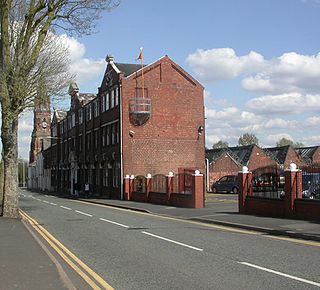
Sunbeam Commercial Vehicles was a commercial vehicle manufacturing offshoot of the Wolverhampton based Sunbeam Motor Car Company when it was a subsidiary of S T D Motors Limited. Sunbeam had always made ambulances on modified Sunbeam car chassis. S T D Motors chose to enter the large commercial vehicle market in the late 1920s, and once established they made petrol and diesel buses and electrically powered trolleybuses and milk floats. Commercial Vehicles became a separate department of Sunbeam in 1931.

The AEC 661T was a two-axle double deck trolleybus chassis manufactured by AEC between 1931 and 1942. Based on the AEC Regent bus chassis, 330 were built for United Kingdom operators. Bodywork on early models was similar to that on the AEC Regent motor bus, but a full-fronted version was used from 1934.
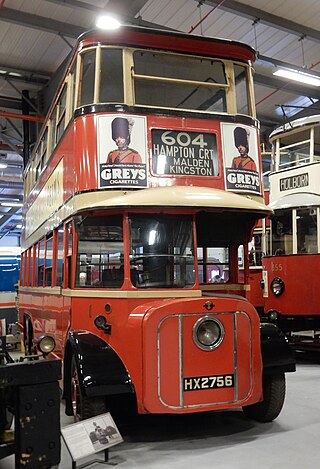
The AEC 663T was a three-axle double deck trolleybus chassis manufactured by AEC between 1931 and 1937. Based on the AEC Renown three axle bus chassis, three demonstrators were bodied by English Electric in 1930. Eighty-three were built for English operators including 60 for London United Tramways.
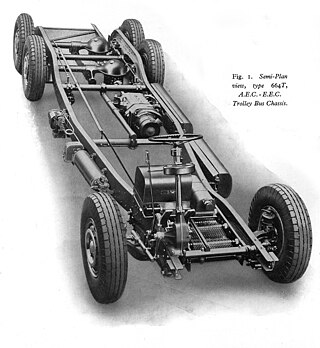
The AEC 664T was a 18 ft. 7 5/16 in. wheelbase three-axle double deck trolleybus chassis manufactured by AEC between 1933 and 1942 and designated for installation of up to 74 passengers' rear- or central-entrance 30 ft. (length) x 7 ft. 6 in. (width) body. Based on the AEC Renown bus chassis, 796 were built for British operators including 660 for the London Passenger Transport Board for whom it was primarily developed.
The AEC 691T was a one-off experimental three-axle double deck trolleybus chassis manufactured by AEC. In 1932, the Underground Electric Railways Company of London commissioned AEC to build an extended version of the AEC 663T.

The AEC 761T was a two-axle double deck trolleybus chassis manufactured by AEC. Based on the AEC Q-type bus chassis, only five were built; a demonstrator that was later purchased by Bradford, one in Southend-on-Sea and three exported to Sydney, Australia.
References
- ↑ Lockwood, Stephen (2017). A-Z of British Trolleybuses. Marlborough: Crowood Press. ISBN 9781785002885.
- ↑ Ward, Rod (2007). AEC Album Part One: to 1945. Zeteo Publishing. p. 21. OCLC 1014414977.